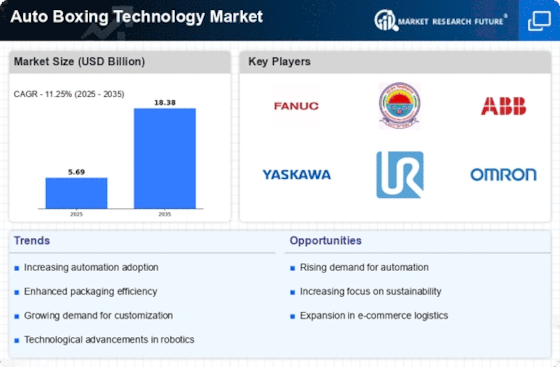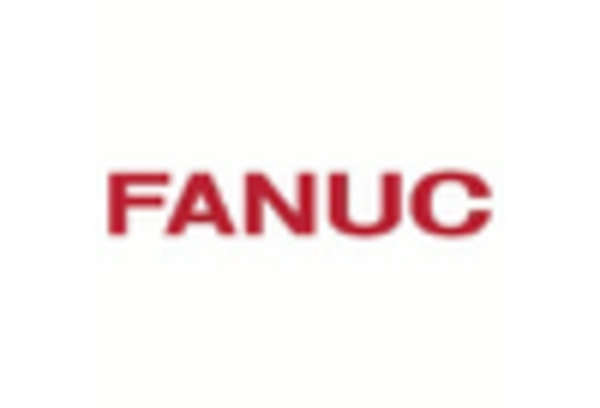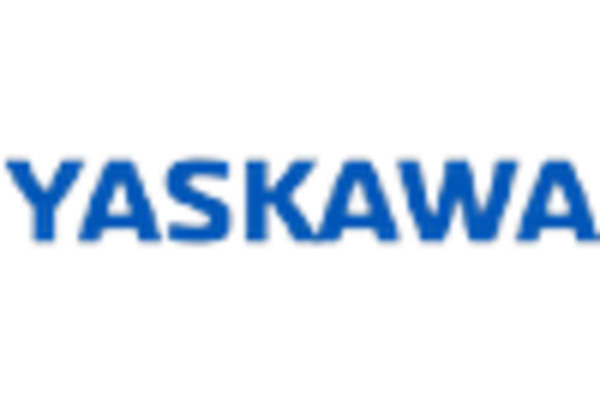The Auto Boxing Technology Market is currently characterized by a dynamic competitive landscape, driven by advancements in automation and robotics. Key players such as Fanuc (Japan), KUKA (Germany), and ABB (Switzerland) are at the forefront, each adopting distinct strategies to enhance their market positioning. Fanuc (Japan) emphasizes innovation through continuous investment in R&D, focusing on developing cutting-edge robotic solutions that integrate seamlessly with existing manufacturing processes. KUKA (Germany), on the other hand, has been actively pursuing strategic partnerships to expand its technological capabilities and market reach, particularly in the automotive sector. ABB (Switzerland) is leveraging its strong global presence to drive digital transformation initiatives, enhancing operational efficiency and customer engagement through smart automation solutions. Collectively, these strategies contribute to a competitive environment that is increasingly focused on technological advancement and customer-centric solutions.
In terms of business tactics, companies are increasingly localizing manufacturing to reduce lead times and enhance supply chain resilience. This approach is particularly relevant in the context of the Auto Boxing Technology Market, which is moderately fragmented, with several players vying for market share. The collective influence of these key players shapes a competitive structure that encourages innovation while also fostering collaboration through strategic alliances and partnerships.
In August 2025, KUKA (Germany) announced a strategic partnership with a leading automotive manufacturer to develop a new generation of automated boxing systems. This collaboration aims to enhance production efficiency and reduce operational costs, reflecting KUKA's commitment to innovation and customer-centric solutions. The partnership is expected to leverage KUKA's advanced robotics technology, positioning the company as a leader in the automotive automation sector.
In September 2025, ABB (Switzerland) launched a new AI-driven software platform designed to optimize the performance of its robotic systems in packaging applications. This initiative underscores ABB's focus on digital transformation and the integration of artificial intelligence into its product offerings. By enhancing the capabilities of its automation solutions, ABB aims to provide customers with greater flexibility and efficiency, thereby strengthening its competitive position in the market.
In October 2025, Fanuc (Japan) unveiled a new line of collaborative robots specifically designed for the boxing process in e-commerce fulfillment centers. This launch highlights Fanuc's strategic focus on addressing the growing demand for automation in logistics and supply chain operations. By introducing these innovative solutions, Fanuc is likely to capture a significant share of the burgeoning e-commerce market, further solidifying its leadership in the Auto Boxing Technology sector.
As of October 2025, the Auto Boxing Technology Market is witnessing several trends that are reshaping the competitive landscape. Digitalization, sustainability, and AI integration are at the forefront, driving companies to innovate and adapt to changing consumer demands. Strategic alliances are becoming increasingly important, as they enable companies to pool resources and expertise to develop advanced solutions. Looking ahead, competitive differentiation is expected to evolve, with a shift from price-based competition to a focus on innovation, technology, and supply chain reliability. This transition will likely redefine how companies position themselves in the market, emphasizing the importance of agility and responsiveness to customer needs.

















Leave a Comment